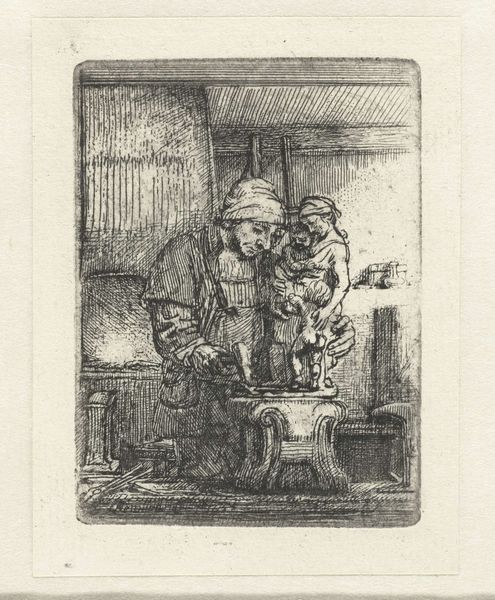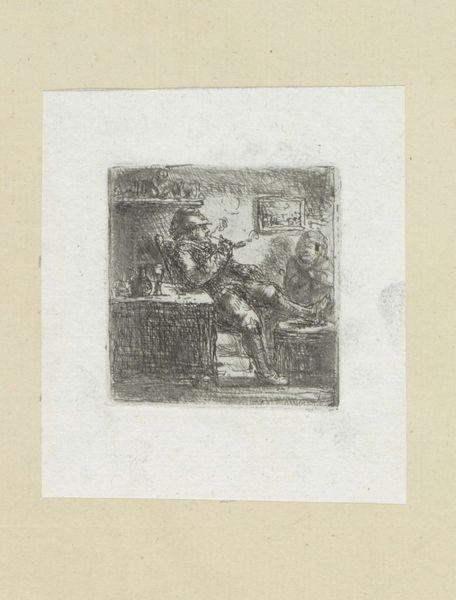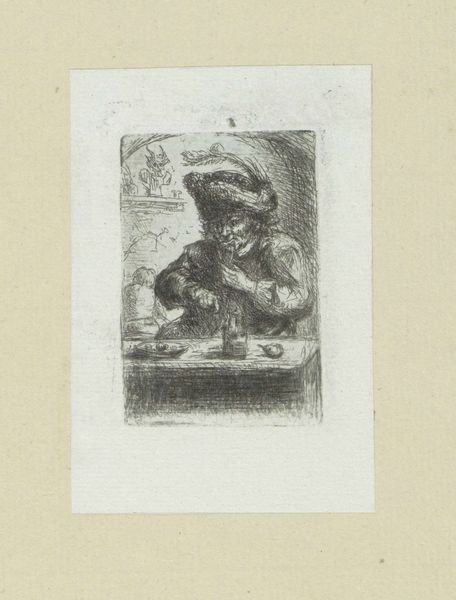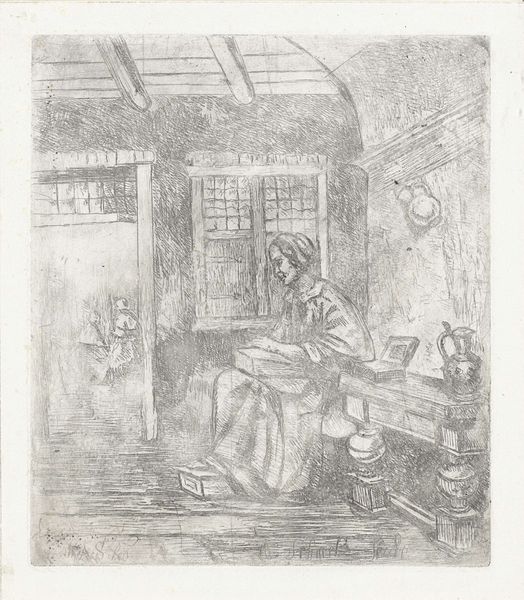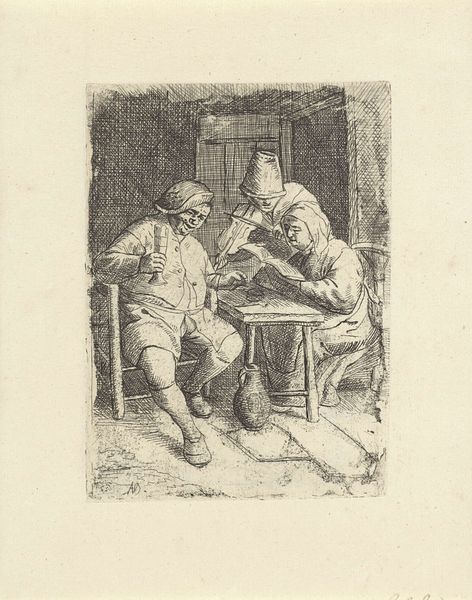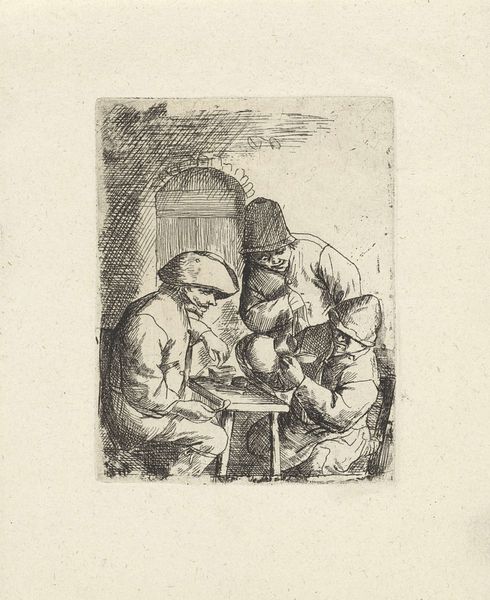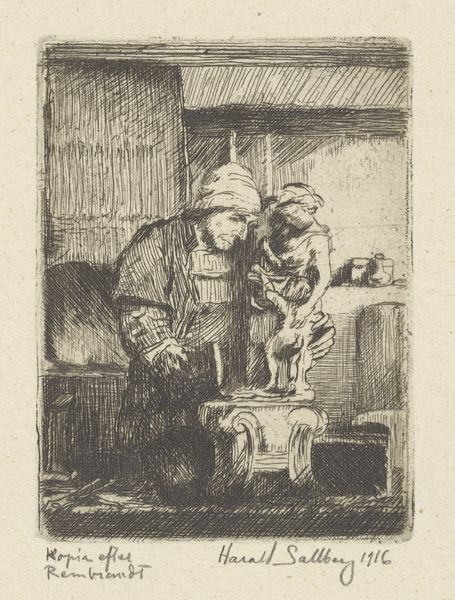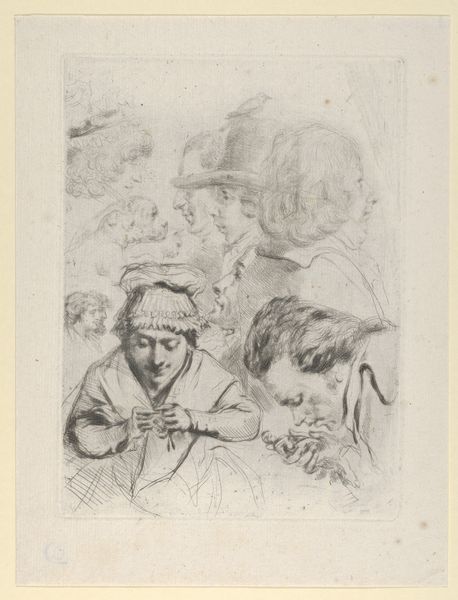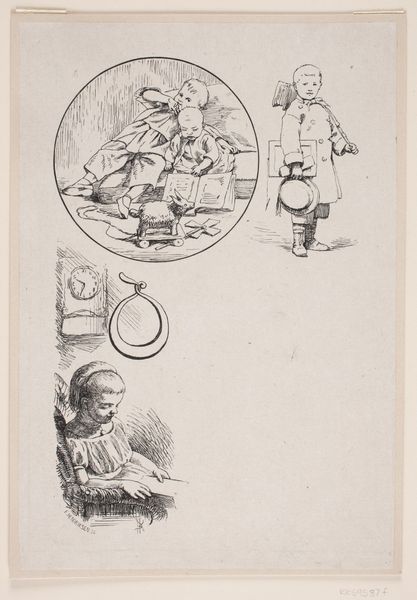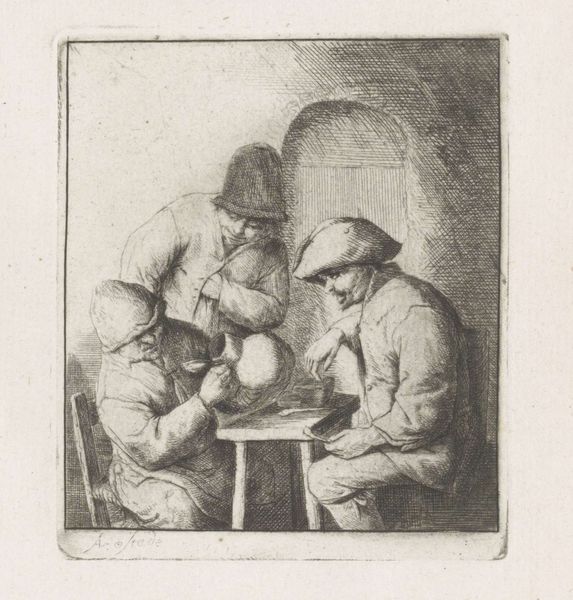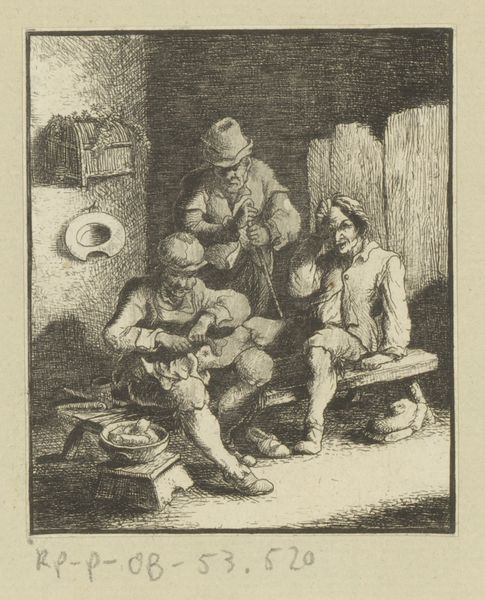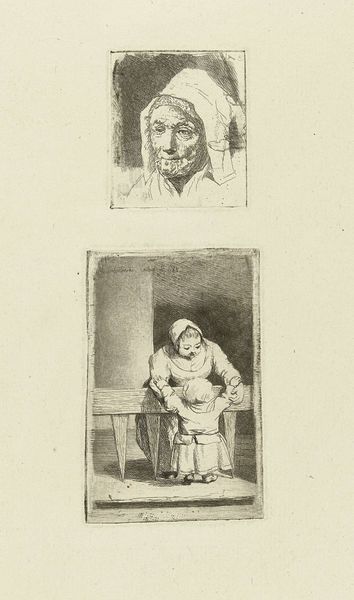
carving, print, metal, etching, intaglio
#
portrait
#
carving
#
baroque
# print
#
metal
#
etching
#
intaglio
#
figuration
#
genre-painting
Dimensions: height 77 mm, width 56 mm
Copyright: Rijks Museum: Open Domain
Editor: Here we have Rembrandt van Rijn’s etching, “Goudsmid,” dating between 1655 and 1808. It depicts a goldsmith working on a piece of jewelry. The intricate lines create a sense of quiet industry. What aspects of this piece do you find most compelling? Curator: What strikes me is the representation of labor. We see not just the craftsman, but a scene of production. In Rembrandt's time, guilds played a powerful social role. I wonder how this image reflects, or perhaps even challenges, the socio-economic structures surrounding skilled trades. What statement do you think Rembrandt is making by immortalizing such a scene? Editor: It’s interesting you bring up social commentary. At first glance, it seems like a simple genre painting, but thinking about guilds, perhaps it is about celebrating craftsmanship? Curator: Or, perhaps it questions it? Consider the time period. The Dutch Golden Age also had stark class disparities. Does the goldsmith's posture suggest pride, or weary labor? The detail given to his face versus the abstraction of his workspace - how do those compositional choices contribute? Also, observe the print making technique itself and how intaglio democratizes art production itself? Editor: I see what you mean. The lines around his eyes do hint at hardship. And making the piece a print also broadens its accessibility… Curator: Exactly! Art isn't created in a vacuum, and recognizing those socio-political currents empowers us to critically evaluate its message and impact. What is your understanding now? Editor: I'm now considering the different layers: the representation of labor, class, and the democratization of art through printmaking. There's much more to this than first meets the eye! Curator: Indeed. That's the beauty of engaging with art critically. There is a great story of democratization of both the subject and medium for us to enjoy today.
Comments
No comments
Be the first to comment and join the conversation on the ultimate creative platform.
